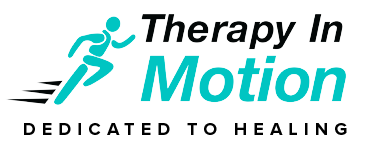What is the Women’s Health Program?
Therapy In Motion provides women’s health physical therapy which offers special education and expertise in the evaluation and treatment of both acute and chronic conditions that specifically affect women. As experts in conservative treatment that include non-surgical and nonmedication solutions, our women’s health physical therapy experts can be an invaluable resource as a part of a wellrounded health care and wellness team.
Most women find it difficult to talk about personal female problems. Our highly trained staff offers women renewed hope to improve their personal symptoms in a confidential and private environment.
Benefits of Women’s Health Physical Therapy
A Therapy In Motion therapist can evaluate the condition of your pelvic floor muscles to determine if they are weak, tight, or in spasm. They can share solutions for functional problems associated with pelvic floor dysfunction and will work with your physician or other health care providers to support you in your rehabilitation.
What is our mission for women’s health procedures?
Our mission is to provide physical therapy to improve wellness, health, and quality of life for women in a respectable, kind, and gentle way
Common Diagnoses
Pelvic floor dysfunction refers to a wide range of problems that occur when the muscles of the pelvic floor fail to work properly. Symptoms may include:
- Chronic Pelvic Pain
- Dysmenorrhea
- Endometriosis
- Interstitial Cystitis
- Pudendal Neuralgia
- Vaginismus
- Vulvodynia
- Incontinence
- Post Surgical Adhesions
- Constipation
- Pre/Post Natal Discomfort
- Coccydynia
- Painful Intercourse
- Breast Cancer
- Lymphedema
How We Treat
- Neuromuscular Stimulation
- Vaginal EMG Biofeedback
- Joint Mobilization of pelvis and lumbar spine
- Pre & Postpartum Programs
- Pelvic and abdominal Soft Tissue Mobilization
- Myofascial Release
- Nutritional Counseling
- Therapeutic Exercise
- Wellness Counseling
- Vaginal Dialators
- Transcutaneous Electrical Nerve Stimulation
Evaluation Components
- Nutritional & Dietary Assessment
- Comprehensive Musculoskeletal Evaluation
- External and Internal Pelvic Examination
- Computerized Pelvic Floor Strength Assessment
- EMG Biofeedback Pelvic Floor Assessment
- Lifestyle & Wellness Assessment
- Functional Movement Patterns
- Muscle Tension/ Spasms/ Contractions
- Evaluation of Abdominal and Pelvic Adhesions
*Services are not available at all locations. Call or click the location page near you for that center’s services.
What to Expect
Every patient has a unique health history, diagnosis and personal goals. When you come for your first appointment, we will create a personalized treatment plan for you.
We work with most major insurance providers and do our best to help keep the paperwork pain-free. If you’d like to confirm your insurance coverage, please let us know and we can verify when you schedule. If your insurance provider requires a co-pay, we will ask for this payment at each visit. We accept payments by cash, check or credit card.
When to Arrive
On average, a patient’s first visit lasts about an hour. We typically ask patients to arrive 15 minutes early to sign-in, complete paperwork and/or change clothes.
What to Bring
On your first visit, you’ll need to bring your physician referral or prescription (if needed), your insurance card, your primary registration forms, your ID or driver’s license and your co-payment (as applicable). If desired, you may bring a change of clothing.
How it Works
During your first visit, your physical therapist will do an initial evaluation and discuss your plan of care. The therapist uses this information to set goals for your continued treatment. Physical therapy goals may include improved movement, strength, endurance and flexibility, as well as decreased pain. Your subsequent visits will focus on treatment that is based on your diagnosis and individualized goals.

